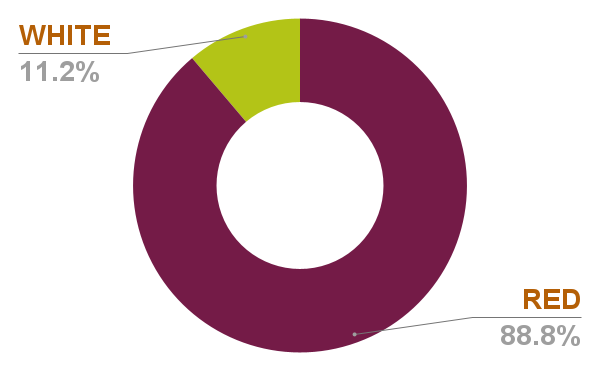By the numbers
-
6AVAs
-
28Physical Wineries
-
0.03%Total Plantings
-
152Acreage Under Vine (Acres)
-
6AVAs
-
28Physical Wineries
-
0.03%Total Plantings
-
61.51Acreage Under Vine (Hectares)

Overview
Once a high-volume production zone of historic importance, LA County now primarily consists of small to mid-sized wineries in urban, suburban, coastal and high-elevation desert settings. This sprawling Southern California wine region is home to disparate terroirs, connected by a largely boutique production model at high elevations. Today, just 206 acres (83.4 ha) are planted to vine, spread across six AVAs:
Three Coastal AVAs in the Santa Monica Mountains: Saddle Rock Malibu, Malibu Coast, and Malibu-Newton Canyon.
The coastal AVAs of Saddle Rock Malibu, Malibu Coast, and Malibu-Newton Canyon are of high repute, despite their relative obscurity outside Southern California. Overlooking the picturesque Malibu coast, these vineyard locations evoke alfresco dining on sandy beaches and are often used for filming. Many are a mere five miles (8 km) from the Pacific coastline, planted on hills that rise up from the Los Angeles Basin. Significant diurnal shifts at altitudes of up to 2,789 feet (850 meters) play a vital role in acid retention over the growing season, despite the vineyards’ coastal proximity. In fact, most vineyards are planted on south-facing slopes in order to mitigate the cool, nighttime temperatures of the region.
Three High-elevation Desert AVAs located between the northern edge of the Sierra Pelona mountains and the southern limit of the Mojave Desert: Sierra Pelona Valley, Leona Valley, Antelope Valley of the California High Desert
The Sierra Pelona Ridge is the northeastern divider between the maritime-cooled basin of Los Angeles and the High Desert plateaus. With peaks ranging up to 5,905 feet (1,800 meters), the Sierra Pelona are the area’s most important topographical feature, dividing these three desert AVAs, which are planted to heights of up to 4,035 feet (1,230 meters) and are more continental than the coastal AVAs. The Antelope Valley of the California High Desert AVA is the driest of the three, and at its northern edge spills over into Kern County.
Grapes grown within the county but outside the aforementioned AVAs may be labelled as Los Angeles County Wines, but do not have a dedicated AVA as of yet. This small collection of vineyards is found primarily in the eastern suburbs of Los Angeles.
